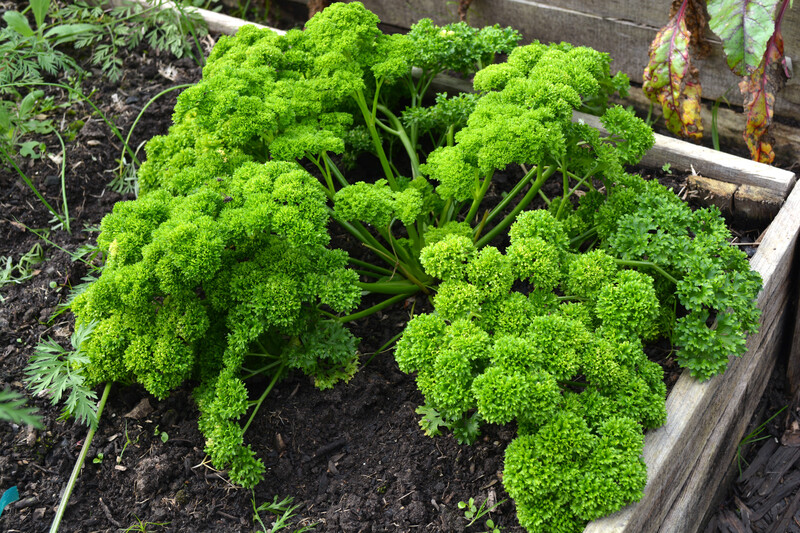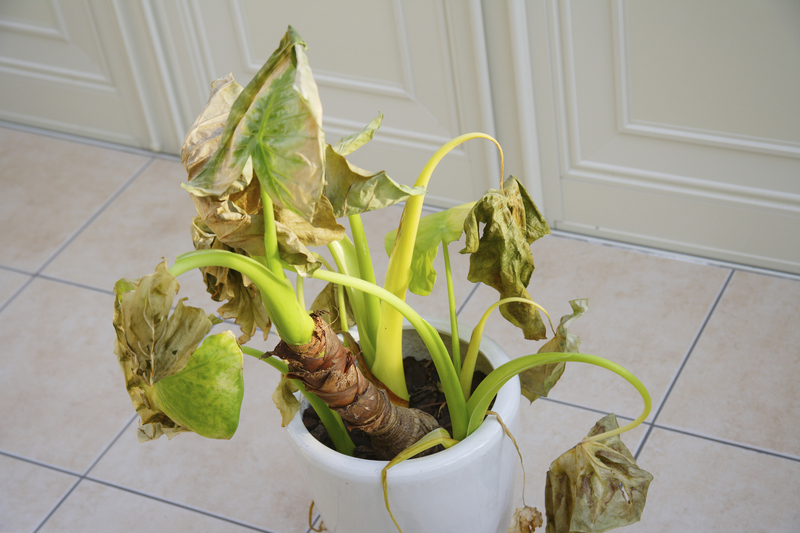Explore the heights with vertical gardening
Posted on 20/09/2025
Explore the Heights with Vertical Gardening: The Future of Urban Greenery
If you've been dreaming of a lush, beautiful garden but lack traditional space, it's time to explore the heights with vertical gardening. This innovative gardening technique has captured the imagination of plant enthusiasts, city dwellers, and eco-conscious homeowners worldwide. In this comprehensive guide, we'll help you unlock the secrets of vertical gardening, offering creative ideas, practical tips, and expert advice on elevating your gardening game--literally!

What Is Vertical Gardening?
Vertical gardening is the practice of growing plants upward, instead of outward. It involves using structures or support systems like trellises, shelves, wall-mounted planters, and even repurposed furniture to cultivate greenery vertically. Whether inside a cozy apartment or on a sun-drenched patio, vertical gardens maximize limited space, boost curb appeal, and offer a refreshing twist on traditional horticulture.
The History and Evolution of Vertical Gardens
The concept of vertical gardens isn't new--it traces back to the Hanging Gardens of Babylon, one of the ancient wonders. Today, modern cities flaunt magnificent living walls, rooftop oases, and balcony gardens that beautify urban landscapes, increase biodiversity, and improve air quality. With increasing urbanization and shrinking green spaces, vertical gardening has emerged as a solution for sustainable living.
Why Choose Vertical Gardening?
Here's why countless people are choosing to explore the heights with vertical gardening:
- Space Saving: Make the most of small spaces like apartments, balconies, and narrow yards.
- Improved Air Quality: Plants absorb pollutants and release oxygen, keeping your environment fresh and healthy.
- Natural Insulation: Living walls act as natural insulators, helping regulate indoor temperatures.
- Urban Greening: Reduce the urban heat island effect and boost city aesthetics.
- Food Security: Grow your own herbs, vegetables, and fruits right at home, year-round.
- Accessible Gardens: Vertical structures reduce bending and kneeling, making gardening easier for everyone.
The Benefits Are Sky High
Vertical gardens bring nature to unexpected places--apartment walls, office lobbies, patios, fences, or even bathroom windowsills. Their transformative power extends beyond beauty:
- Noise Reduction: Dense vertical plantings can dampen noise, creating peaceful urban retreats.
- Energy Efficiency: Green walls lower energy costs by providing natural insulation, reducing heating and cooling expenses.
- Wildlife Habitat: Living walls can attract pollinators and beneficial insects to your space.
Vertical Gardening Techniques and Systems
1. Trellises and Climbing Supports
Trellis gardening is one of the simplest ways to explore heights with vertical gardening. Install trellises, wires, or lattices for climbing plants like peas, beans, cucumbers, and flowering vines such as clematis or morning glories. These supports can be made from wood, bamboo, or metal--customized to fit any space.
2. Wall-Mounted Planters
Wall planters or 'living walls' bring instant drama and lushness indoors or outside. Modular panels, pocket planters, or even DIY wooden pallets filled with soil create vibrant tapestries of herbs, ferns, succulents, and more.
3. Hanging Gardens
Use baskets, repurposed containers, or fabric pouches hung from ceilings, railings, or beams to cultivate flowers, herbs, and strawberries. Hanging gardens are perfect for balconies or sun-drenched windows.
4. Vertical Hydroponic Systems
Vertical hydroponic gardening uses stacked columns or wall systems where plants grow in nutrient-rich water rather than soil. These are excellent for growing leafy greens, microgreens, or strawberries--especially when space and mess are major concerns.
5. Tiered and Shelving Units
Repurpose old bookshelves, ladders, or purpose-built garden racks to create multiple levels of green. Each shelf can host a different plant variety, maximizing light and accessibility.
Choosing the Best Plants for Vertical Gardens
Flowering Plants
- Petunias
- Nasturtiums
- Lobelias
- Begonias
- Jasmine
- Clematis
Edible Crops
- Tomatoes (cherry and grape varieties thrive vertically)
- Peas and pole beans
- Lettuce and leafy greens
- Herbs: basil, parsley, oregano, mint
- Strawberries
- Peppers
Foliage and Houseplants
- Pothos
- Philodendron
- Spider plant
- English ivy
- Ferns
Tip: Choose plants that suit the light and climate conditions of your vertical location. Mix and match trailing, upright, and bushy varieties for a lush, layered effect.
How to Get Started with Your Own Vertical Garden
Step 1: Assess Your Space
Determine where your vertical garden will live--indoors on a sunny wall, outside against a fence, or on a sunny balcony. Check for light, wind exposure, and structural support.
Step 2: Choose a System
Will you use wall pockets, build a trellis, or opt for a hydroponic tower? Your choice will depend on available space, budget, and what you'd like to grow.
Step 3: Select Suitable Plants
Pick varieties that are suited to your light, temperature, and maintenance preferences. Remember to combine plants with similar water and nutrition needs.
Step 4: Install and Plant
Mount your structure securely, using appropriate hardware to handle the weight of soil and mature plants. Fill planters with quality potting mix and plant your chosen varieties.
Step 5: Maintain and Enjoy
Regularly water, feed, and prune your vertical garden. Self-watering systems and drip irrigation can simplify care--especially for large or outdoor installations. Watch your garden thrive, harvest your herbs or blooms, and delight in your achievement!
Practical Tips and Tricks for Vertical Garden Success
- Water Wisely: Vertical planters can dry out faster. Use self-watering planters or drip irrigation to maintain moisture levels.
- Light it Right: Ensure your chosen spot delivers adequate sunshine. Supplement with grow lights for indoor gardens.
- Feed Your Plants: Nutrient-rich potting mixes and occasional fertilization keep plants healthy and productive.
- Mind the Weight: Be sure your support system is strong. Wet soil can get heavy, especially in large or multi-tiered installations.
- Prune and Rotate: Regular pruning encourages bushy growth; rotating containers keeps growth even.
- Pest Vigilance: Keep an eye out for pests hiding in tight crevices. Integrated Pest Management techniques work well.
DIY Vertical Gardening Ideas
Pallet Gardens
Repurpose a wooden pallet into a rustic vertical garden by stapling landscape fabric to the back and filling spaces between slats with soil. Plant herbs, lettuces, or flowers.
Hanging Shoe Organizer Planter
Old canvas shoe organizers make fantastic space-saving vertical planters. Hang them on a fence or wall, fill pockets with soil, and add herbs or succulents.
Gutter Gardens
Mount sections of old rain gutters horizontally on a wall or fence, then plant trailing annuals, lettuces, or strawberries--perfect for edible landscaping.
Stacked Pot Tower
Stack pots of varying sizes on a metal rod or pole to create a whimsical vertical structure for flowers or berries.
Embracing Sustainability Through Vertical Gardening
Vertical gardening is more than just a design trend--it's a tool for sustainability. When you explore heights with vertical gardening, you:
- Reduce food miles by growing your own edibles
- Minimize resource use through concentrated watering and fertilization
- Encourage more green cover in concrete-heavy spaces
Common Challenges (and Solutions) in Vertical Gardening
1. Watering Issues
Water trickles down quickly, leaving upper plants dry and lower ones waterlogged.
Solution: Use a drip irrigation system or wick watering to distribute moisture evenly.
2. Limited Root Space
Plants can be stunted if roots don't have space.
Solution: Select plants suited for containers and trim root-bound growth regularly.
3. Plant Selection
Not all plants adapt to vertical conditions.
Solution: Choose varieties bred for compact growth and thriving in small spaces.
4. Structural Stability
Poorly anchored planters can fall, causing damage.
Solution: Always install mounting hardware rated for your garden's full weight.
Vertical Garden Inspiration from Around the World
From Singapore's famed "Gardens by the Bay" to the lush living walls of Paris, vertical gardening is transforming both private homes and public spaces. Consider these ideas:
- Office Living Walls: Incorporate biofiltration and accent greenery into commercial buildings.
- Balcony Edible Gardens: Turn apartments into food oases with stacked planters.
- Restaurant Facades: Use aromatic herbs and edible flowers as tasty decor.
Let these feats spark your creativity as you explore the heights with vertical gardening at home!

Frequently Asked Questions About Vertical Gardens
Can I install a vertical garden indoors?
Absolutely! Many plants thrive indoors with proper lighting and humidity. Ensure your wall or surface can support the weight of the system and containers. Herbs, ferns, and pothos are excellent indoor choices.
How often should I water my vertical garden?
It depends on plant choice and exposure, but most vertical gardens need more frequent watering than ground beds. Check soil moisture daily, especially in hot or dry climates. Self-watering solutions work well for forgetful gardeners.
Is vertical gardening expensive?
Vertical gardening can be as budget-friendly or as high-end as you wish. DIY vertical gardens made from recycled materials are affordable, while commercially installed living walls offer convenience and expert design.
Can I grow vegetables in a vertical garden?
Yes! Many edibles, such as lettuce, tomatoes, peppers, strawberries, and even some root vegetables, can thrive vertically with the right setup.
Ready to Explore the Heights of Vertical Gardening?
Embracing vertical gardening isn't just a practical solution for cramped spaces--it's a revolution in how we connect with nature. Whether you're seeking a fragrant bouquet outside your window, homegrown greens for your table, or a green sanctuary in the heart of the city, vertical gardens offer limitless potential.
Begin your journey upward. Experiment with different structures, plants, and styles. With each plant you add, you'll breathe new life into your space and explore new heights with vertical gardening--both in beauty and well-being.
Let your walls and fences transform into living canvases. Happy gardening!



